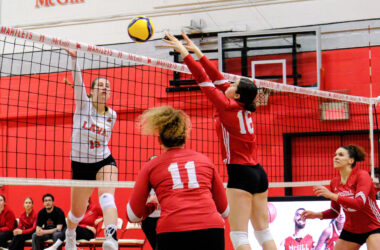American sports have leapt beyond borders, turning the world into their playground. At the forefront of this transition is the National Football League (NFL). In 2005, the NFL organized its first overseas game when the Arizona Cardinals faced off against the San Francisco 49ers at Estadio Azteca in Mexico City. The game brought over 103,000 fans in attendance—one of the largest crowds to watch a regular-season game in NFL history.
In 2007, NFL Commissioner Roger Goodell announced the inauguration of the NFL International Series, which entailed regular season games played overseas every year. The goal was to increase the popularity of the sport outside of the U.S. by hosting games throughout Europe, particularly in the United Kingdom. Increased social media usage has led the NFL to continue to grow in popularity, with searches for “NFL shop Europe” increasing 240 per cent outside of the U.S. over the past year.
The National Basketball Association (NBA) has been playing seasonal games overseas for decades before the NFL. The first international game featuring an NBA team occurred in 1979 when the Washington Wizards, formerly the Washington Bullets, faced off against Maccabi Tel Aviv in Tel Aviv. While the NBA continued to host games abroad, their popularity did not surge until 1992 when Team USA won gold at the Barcelona Olympics. Michael Jordan, Larry Bird and Magic Johnson—three of the greatest players in NBA history—teamed up for the first time to make up what is now known as the “dream team” of basketball. This team represented the skill of the NBA and introduced the league in Europe, increasing NBA viewership abroad.
Games played outside of the U.S. and Canada have the potential to earn sports associations tremendous amounts of money. Both leagues already rake in incredible sums each year, with the NBA making roughly $10.6 billion USD in revenue in the 2022-2023 season and the NFL making about $13 billion USD in 2023. Despite these high numbers, these leagues still hope for more. While the NFL’s International Series has yet to bring in substantial revenues, the league plans that it will pay off in the long run. Countries hosting these games may also reap long-term economic benefits, as some reports estimate each host city will have a turnover of around $40 million USD and has the potential to increase tourism.
Having American teams play regular season games overseas is not without its impacts. There are clear environmental drawbacks to hosting games abroad. For example, hosting international games contributes to more amounts of carbon dioxide emissions due to increased travel distances from teams, coaches, and spectators. During regular season games, the NFL contributes an average of 20.8 metric tonnes of carbon dioxide per game, making it the sport with the largest carbon footprint in major U.S. sports leagues. In comparison, the NBA emits the third largest carbon footprint: 13.7 metric tonnes per game. The NFL’s greater emissions are attributed to the larger distances between NFL venues in the U.S., compared to other major U.S. sports leagues with closer venues.
Although both the NFL and the NBA have taken some steps to address these issues such as the NBA and NFL Green Initiatives. In addition to this, the NBA is focusing on reducing flight miles to games within the U.S., reducing travel miles by 11 per cent, and reducing greenhouse gas emissions by 39 per cent from the 2022-2023 season. These initiatives to reducing domestic mileage do not make up for the steep environmental impact that overseas games result in.
The globalization of American sports, particularly the NFL and the NBA, has brought significant financial benefits and increased international popularity, but these gains come at an environmental cost. As these leagues continue to expand their global reach, they must balance their economic ambitions with a greater commitment to environmental sustainability.









